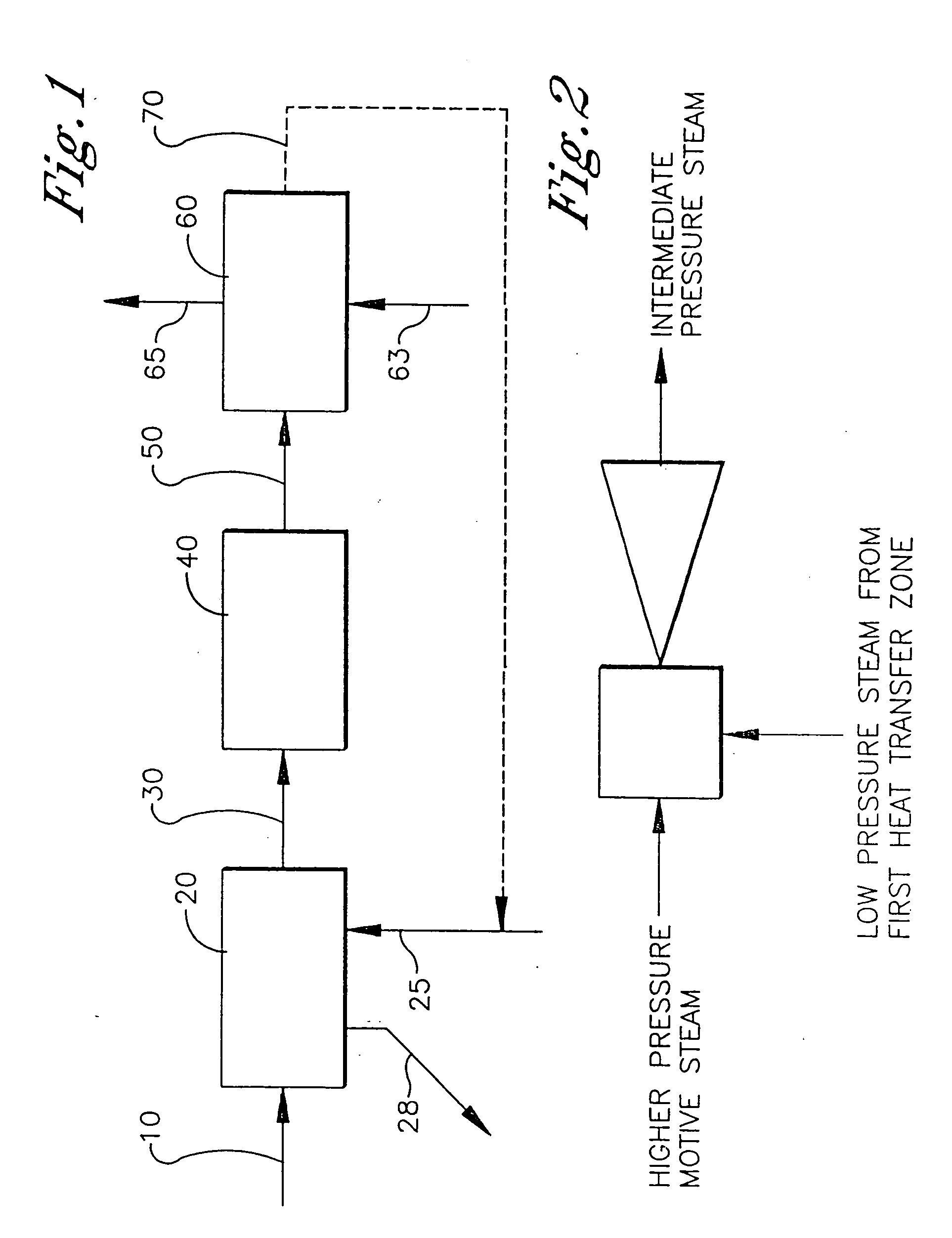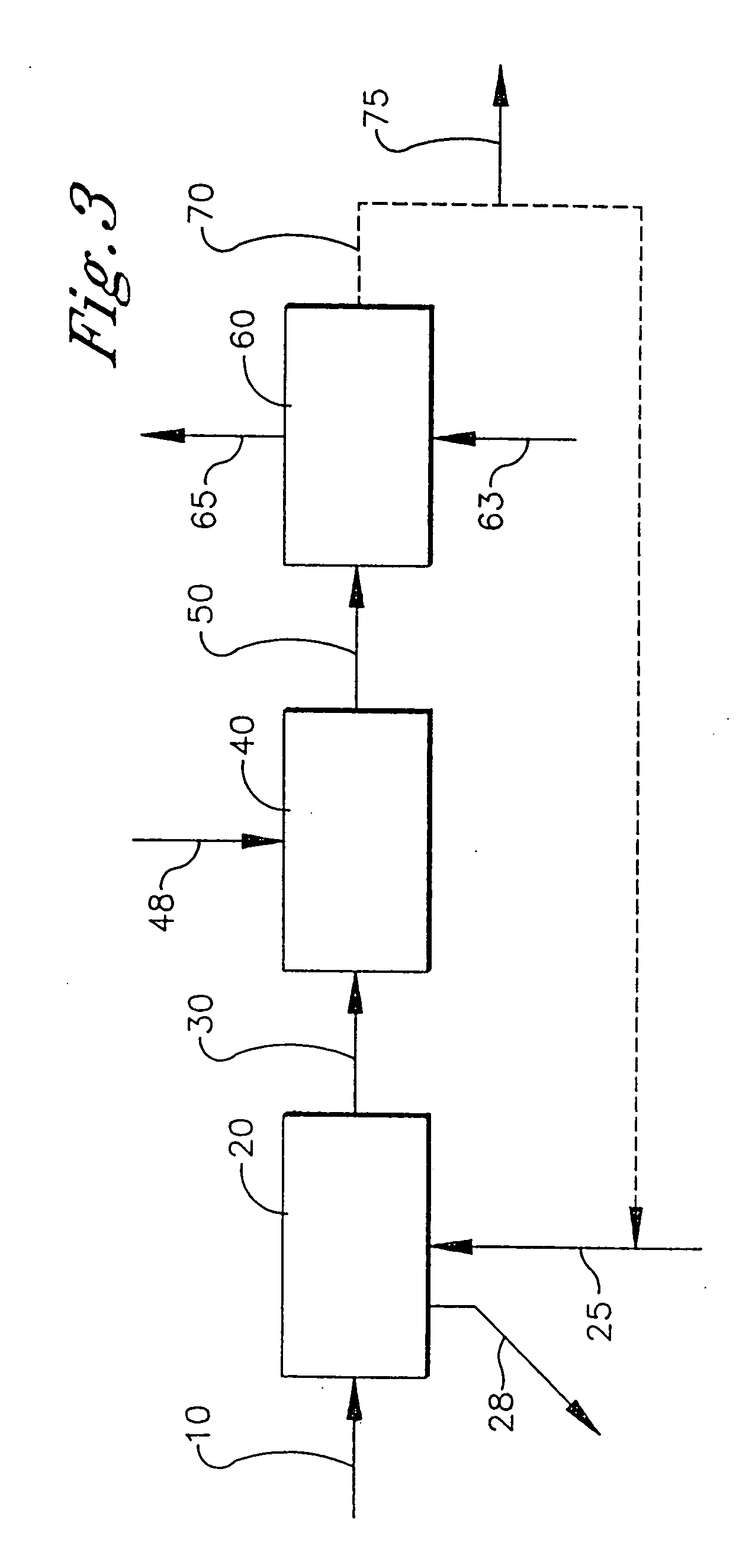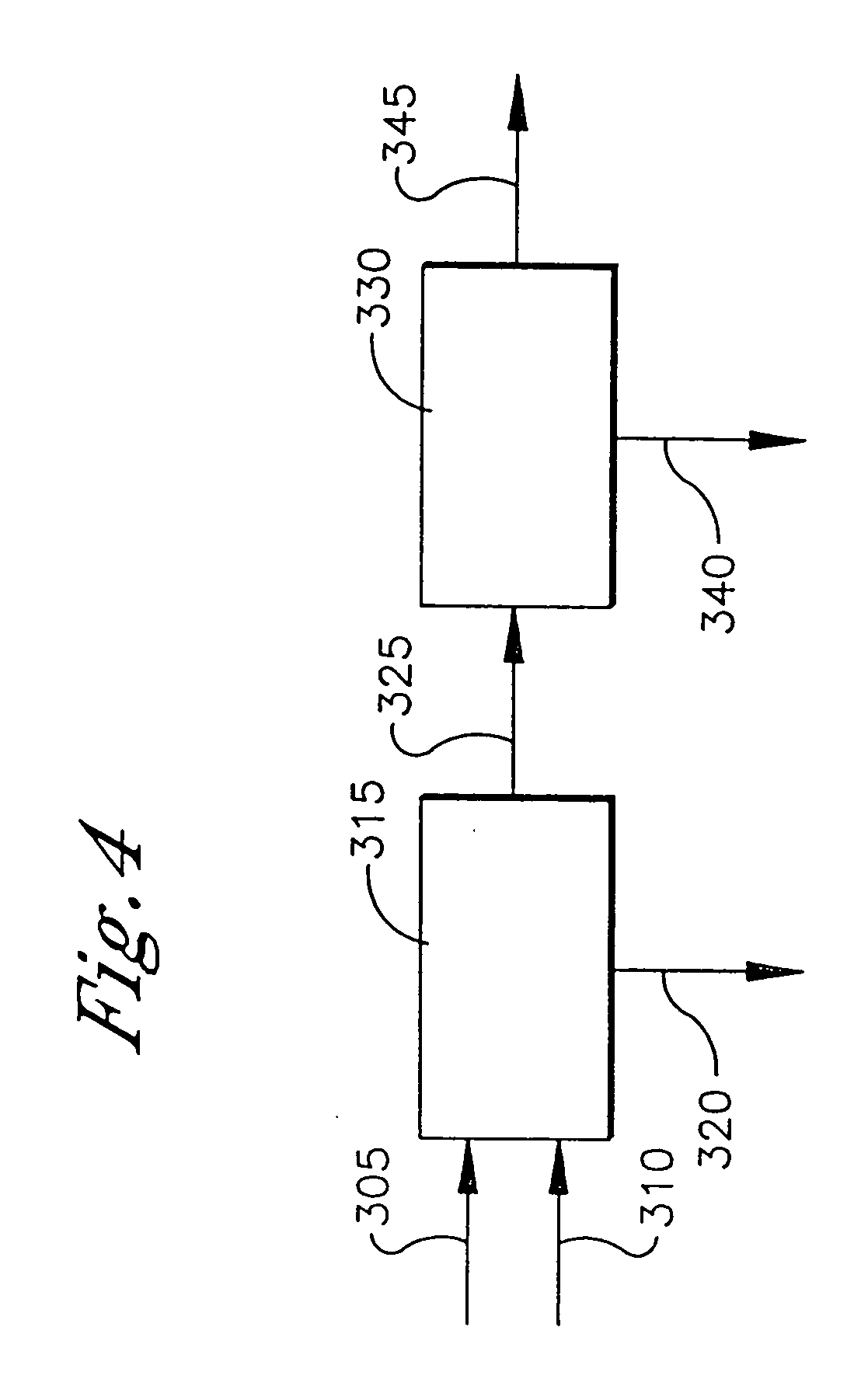Steam recompression in carboxylic acid processes
a carboxylic acid and steam recompression technology, applied in the direction of machines/engines, automatic control of ignition, lighting and heating equipment, etc., can solve the problems of significant technical and economic problems, physical production of steam is relatively insignificant, and both general schemes have certain drawbacks and limitations
- Summary
- Abstract
- Description
- Claims
- Application Information
AI Technical Summary
Benefits of technology
Problems solved by technology
Method used
Image
Examples
Embodiment Construction
[0049] Various embodiments are disclosed for producing steam in carboxylic acid production processes. Carboxylic acids include, but are not limited to, aromatic carboxylic acids produced via controlled oxidation of an organic substrate. Such aromatic carboxylic acids include compounds with at least one carboxylic acid group attached to a carbon atom that is part of an aromatic ring, preferably having at least 6 carbon atoms, even more preferably having only carbon atoms. Suitable examples of such aromatic rings include, but are not limited to, benzene, biphenyl, terphenyl, naphthalene, and other carbon-based fused aromatic rings. Examples of suitable carboxylic acids include, but are not limited to, terephthalic acid, benzoic acid, p-toluic acid, isophthalic acid, trimellitic acid, naphthalene dicarboxylic acid, and 2,5-diphenyl-terephthalic acid.
[0050] In one embodiment of this invention, a process to recover thermal energy from a high temperature process stream 10 is provided. Th...
PUM
| Property | Measurement | Unit |
|---|---|---|
| pressure | aaaaa | aaaaa |
| pressure | aaaaa | aaaaa |
| temperature | aaaaa | aaaaa |
Abstract
Description
Claims
Application Information
 Login to View More
Login to View More - R&D
- Intellectual Property
- Life Sciences
- Materials
- Tech Scout
- Unparalleled Data Quality
- Higher Quality Content
- 60% Fewer Hallucinations
Browse by: Latest US Patents, China's latest patents, Technical Efficacy Thesaurus, Application Domain, Technology Topic, Popular Technical Reports.
© 2025 PatSnap. All rights reserved.Legal|Privacy policy|Modern Slavery Act Transparency Statement|Sitemap|About US| Contact US: help@patsnap.com



